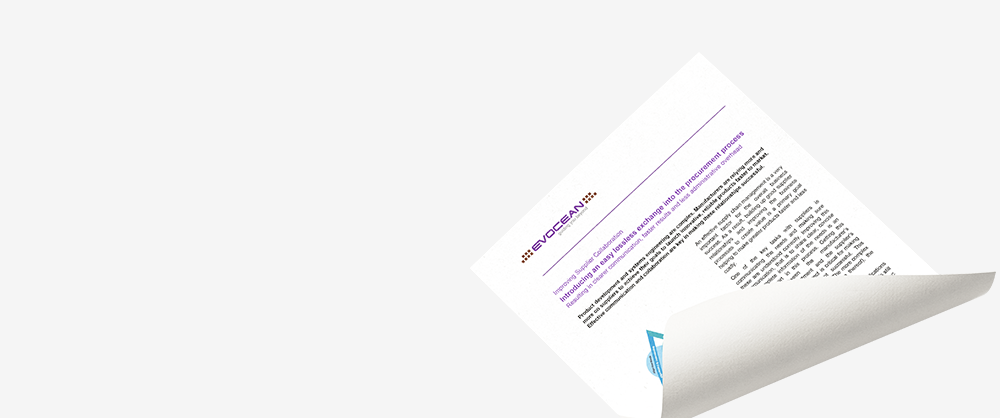Good Requirements Engineering and Management is a critical success factor for the efficient development of complex systems. This includes both Requirements Engineering and measures to control, monitor, and administer requirements.
EVOCEAN guides customers in the improvement and in establishing requirements engineering and management practices. A broad and extensive experience in various sectors allows us focused and customer specific guidance.
To respond to today’s needs for product development, simply making lists of the requirements is no longer enough. The increasing complex, dynamic and fluid situation can only be addressed with comprehensive, tool-supported Requirements Engineering and Management. This is required to keep control of risk, manage change and monitor implementation.
EVOCEAN maintains a close cooperative relationship with best-in-class manufacturers of Requirements Management Tools. When combined with our experience in Requirements Engineering, this allows us to offer our customers sustainable, profit-enhancing solutions.
In our fast-moving world it is difficult to define all requirements for future products and services upfront. Further, driven by the integration of additional functionality and performance needs in products, the competitive environment is becoming even more dynamic. At the same time we are confronted with new technologies, customers and competitors as well as with changing standards and regulations. To cope with these challenges successfully, agility in requirements management is beneficial. We can help you!
Agile requirements analysis and documentation, which enjoy increasing popularity, deviate in some points from the classical approach. EVOCEAN helps you to find pragmatic approaches (classical and agile) which correspond best with your development organization as well as with the standards relevant for you.
Various practices for requirements management are surely already in use in your company. We help you to identify best practices, to optimize them and to establish them throughout the company.
Identify customer requirements: with the help of different techniques, which optimally correspond to the abilities of your team, the requirements of your systems, as well as to the culture of the various stakeholders. Use Cases, interviews, templates and other “tools” support the communication between the various stakeholders.
To refine customer requirements into the developer’s language: define terminology and level of detail for every requirement type in order to write clear and precise product specifications.
Verify that requirements are traceable, unambiguous, clear and testable: for example with check lists, reviews or analysis models (UML/SysML).
Manage requirements and their changes throughout the project lifecycle; to enable traceability, in order to ease analysis and valuation of impact of changes on the projects.
Agile and Lean Methods Applied to Requirements Management
In fast changing projects, experimentation must be built into the development process; also because it is usually not possible to fully define the product at its inception. In order to implement the feedback of the product owners early in the process, complex products must be split into understandable parts and be developed in fully functional iterations.
To cope with standards such as CMMI, IEC 62304, IEC 61508, ISO26262 etc. supporting tools are very beneficial. In order to guarantee the required traceability and documentation of the development process on one side and on the other hand, also to efficiently realize the requirements with modeling into the design. The tools also help that products are completely specified and that the product, the tests and the risks are traceable to all requirement levels. A major benefit of tool support is the easy impact analysis of changes.
EVOCEAN supports you to evaluate and implement corresponding tools and technologies with the aim to improve your processes and to raise your development efficiency, thus minimizing risk and cost. Our expertise is based on years of experience with many known tools in various domains as well as on practice-oriented knowledge.
Developing complex systems efficiently (mechanical components, hardware or software chips) from the multi-layered requirements, nowadays the functional modeling with SysML is used increasingly.
Agile requirements management is a logical advancement with respect to the classical approaches corresponding to actual needs of our time. The simple and in itself consistent approach allows you to develop new products with minimum effort and risk, according to market requirements and creating space for innovation!
 Download Whitepaper
Download Whitepaper
Learn through this case study how we helped a customer developing a complex new system to streamline the exchange of his requirement specifications with the suppliers in a much easier, more structured and systematic way. This allowed to manage diverse suppliers and the individual changes. The solution helps to reduce admin overhead substantially and at the same time making the communication more clearer and the exchange much more effective, for both sides.
 Download Whitepaper
Download Whitepaper
Poor requirements engineering impacts project outcome. Find out how AI can help to speed up, improve your requirements to make them clearer.
 Download Whitepaper
Download Whitepaper
Exchanging specifications can be challenging, especially in a one to many relationship and with keep track of all the changes. Here a ReqIF based exchange can help.
ReqEdit build up natively on ReqIF (the international Standard on Requirements Interchange) simplifies the workflow of requirements exchange between suppliers and producers. ReqEdit is built from the ground up to support ReqIF.
IBM Rational DOORS Next generation is IBM’s next generation requirements management solution for complex software and systems engineering environments, helping engineers to work more effectively across disciplines, time zones, and supply chains.
IBM® Rational® DOORS® is a requirements management tool for systems and advanced IT applications. It is a requirements management application for optimizing requirements communication, collaboration and verification throughout your organization and supply chain.
IBM Engineering Requirements Quality Assistant helps to improve the quality of requirements when you write them. As a result your design and test team will also be more effective. Defects are substantially reduced. Further, costs of reviews are very much reduced helping to focus time on the real issues. All leading to reduced time to market.
Helix ALM is an integrated suite of application lifecycle management tools that encompasses following stages of the development process: Requirements Management, Issue Management and Test Case Management.
Taking the right product to market at the right time is a decisive factor for success in today’s competitive environment. Development processes must return results fast, without compromising on quality or deviating from the requirements profile. They must further be designed to allow a fast response to changing market needs. It should also be easy to improve new products after they have been launched. The dynamics and changes cannot be handled any more effectively in Word or Excel based requirements solutions. Capturing, managing, tracking, analyzing requirements easily and in a manner that they can be communicated and tested effectively is key to success.
These claims can only be met by adaptive and efficient Require-ments Management & Engineering (RE): from capturing, organizing, versioning, publication and monitoring to change and impact analysis of requirements.
The following three points are critical to success:
Requirements and their test criteria must be understandable, testable, unambiguous, feasible and consistent.
Not all requirements are equal. Priority, weighting, and risk assessment are important attributes for effective planning of re-sources.
Requirements must be traceable. This is the only way to ensure that the effects of new needs can be analyzed and calculated and that certification needs are met.
The latter point is becoming ever more important as the reuse of systems, integration of new functionalities and merger of solutions due to company amalgamations are becoming ever more predominant in our changing environment.
A systematic process, requirements engineering proficiency and appropriate software tools to manage requirements help to define tasks and goals clearly from the beginning. Changes are communicated continuously and documented seamlessly. This is essential for working together efficiently and thus successfully in a project team.
Skillfully automated requirments engineering will repay you in time-to-market, quality, reuse of key know-how and keeping a handle on cost. And you can monitor the development projects to meet your customers’ needs.
In today’s market pace, it is impossible to define a new product in advance completely before the start of a project. This is partly because an understanding of the requirements comes with time, especially in innovation driven developments. In addition, customers change their minds and applied technologies undergo further development, enabling new insights and solutions. Therefore it is im-portant to begin development as quickly as possible and integrate new requirements along the way. Regular feedback loops ensure that the path you pursue is the right one.
Each company has its specific “requirements information model”, including process, workflows and specific access rights. This needs to be documented as a baseline.
Teams must work on a specific development step during different phases of the project and must ensure that it always meets current requirements.
All changes must be analysed in terms of impact before being implemented.
All affected team members must be notified immediately upon changes in requirements, to allow them to respond appropriately and not work on “out-dated” requirements.
Studies show that skills in requirments engineering are still very low which may be corre-lated to the investments in Training. Skills in requiremens engineering seem to be taken for granted by management. As such it is no surprise that RE can be associated to many failures. Additionally investment in tool support is also low – again surprisingly as for an efficient development an effective RE solution is essential.
EVOCEAN supports you in finding the optimum solution for your company: from analysis of your requirement process, through assessment and design of processes to guiding you in taking the next steps and also in assisting in selecting the appropriate tool. We make certain that interfaces to other domains, such as Configuration Management and Version Control, Testing Solutions, Model Driven Development, Product Line Engineering etc. are taken into consideration and synergies are tapped. We base our offer on proven methods and expertise including innovative tools. Of course we also offer corresponding coaching, training, and workshops – to ensure that your investment will be an all-round success!